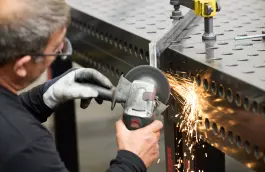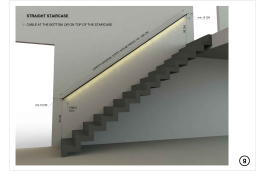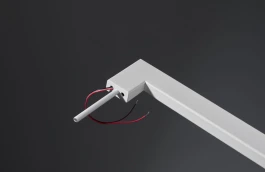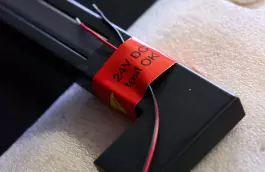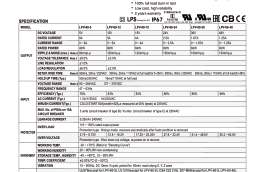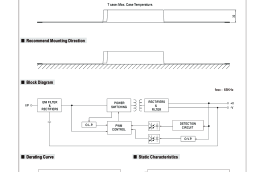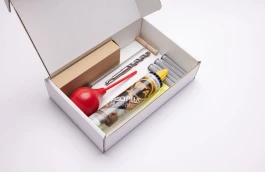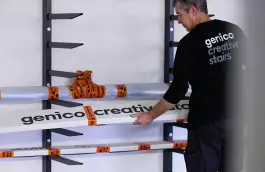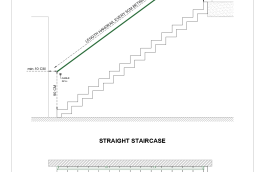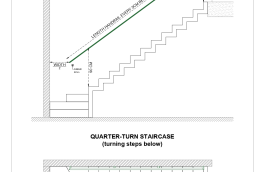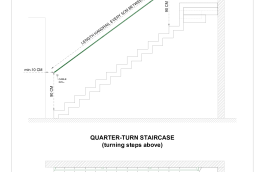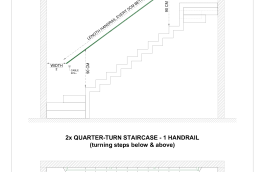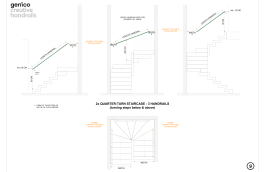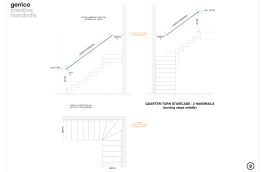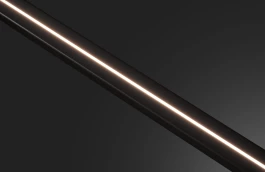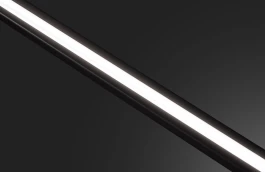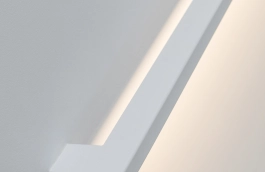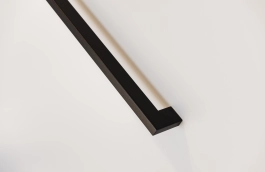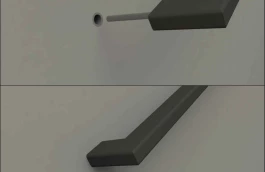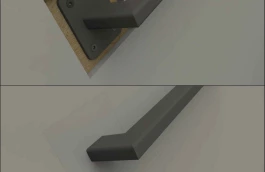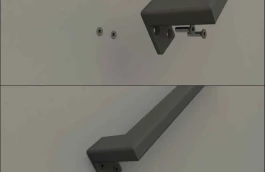Frequently Asked Questions
All the answers to your questions about our products can be found here. Are you still unable to find what you’re looking for? Do not hesitate to get in touch; we will be happy to help.
Technical info
Replacing the LEDs is only possible with the wide lights (the handrail must be dismantled with the narrow LEDs). The LED strips do have a very long lifespan. If the LEDs stop working properly after a number of years, it may be due to the transformer being faulty.
This can be at the bottom or top of the stairs. The handrail normally has a height of 900 mm. The cable does not have to be 100% exactly in the right place beforehand, some space is needed to connect the cable to the handrail cable afterwards.
For more info, see the technical support page.
The handrail is placed at 900 mm perpendicular to the step nose as standard. But of course, the height of the handrail is personal. Changing the height of the handrail has no effect on the length of the handrail.
This can be done by switch, motion detector, time switch, etc. No control can be provided on the handrail itself. Handrail lighting works on the same principle as a classic lamp in the home. This is arranged by the customer.
If no switch is provided, we recommend an astro timer. This can be placed in an electrical cabinet and has numerous options (summer/winter time/end of day, etc.) in terms of operation. One example is Theben's astro timer. This is arranged by the customer.
The number of fixing points depends on the overall length, but keep in mind an average distance between fixings of 1200-1300 mm. An attachment is always provided at the beginning and end. When ordering the handrail, you will also receive the technical drawing that shows all the fastening points for the chosen length.
Note
The LED lights operate on 24 V. This means a transformer is required, which you can provide yourself or order with your handrail.
The type of LEDs used are:
-
Warm white 2700K, 749lm/m, 120 leds/m, 24 V, 9 W/meter, width 8 mm, IP20
-
Warm white 3000 K, 790 lm/m, 120 leds/m, 24 V, 9 W/meter, width 8 mm, IP20
-
Cold white 4000K, 816lm/m, 120 leds/m, 24 V, 9 W/meter, width 8 mm, IP20
The handrail consists of 1 part, so keep this in mind when transporting. Be sure to check you can get the handrail up to the stairs.
The transformer is 24 VDC - 60 Watts and has the following dimensions 163 x 43 x 32 mm (L x W x H). This is not a DIN Rail driver. The driver must be located between the electrical cabinet and the handrail for the conversion of 220 V to 24 V. They are usually mounted next to or in electricity cabinets. Keep in mind that the driver must remain accessible if it ever requires replacement.
The LEDs are dimmable, but this is only useful when choosing the wide LEDs. If you want to be able to dim them, you will need to install a dimmer and a custom transformer.
You can have the handrail delivered to your home, or you can come and pick it up from our workshop in Ruiselede.
The handrail is wrapped in protective foam and foil and is made in 1 piece. This means the length of the handrail is also approximately the length of the package. Keep in mind a width of +/- 200 mm and a height of +/- 60 mm. The maximum weight is +/- 30 kg. Depending on its length, it can fit in a trailer or van.
Use a pair of tension straps to secure the handrail properly. If a transporter handles the handrail, a box (450 x 210 x 150 mm) is attached to the handrail, otherwise it is supplied loose.
You can, but keep the maximum width of 13 mm in mind. The cable at the end should be no more than 250 mm. The LEDs are sent by the customer and genico installs the LEDs in the handrail. This means a power supply will not be included and must provided by the customer.
Tips on configuration
You will find all possible staircase configurations and the corresponding manual for measuring your handrail in the technical support. The handrails are made in multiples of 5 cm (example: 422 cm becomes 420 cm or 425 cm).
If you wish to use the handrail to illuminate a slightly dark room, or if the stairs are between 2 walls, it is best to choose the wide LEDs (13 mm) as they give out a lot of light. If the handrail is only going to be used for mood or orientation lighting, it is best to choose the narrow LEDs (3 mm). If in doubt, you can choose the wide LEDs and have a dimmer fitted.
The handrails are always powder-coated in RAL colours.
Standard black is RAL 9005 - standard white is RAL 9016. There are a number of other colours you can choose at no extra cost: RAL 7021-7033-7035-8022-9003-9006-9007-9010-9004-9011.
The Anodic colours are new; they are warm shades that nicely match your interior. Anodic Bronze and Anodic Brown always come with a smooth coating.
Other colours are also available on request.
There are several options:
- Chemical anchoring against a stone wall
The handrail is anchored invisibly in the wall. This can be against a classic stone wall (quick construction, concrete brick, concrete, sand-lime brick, etc.). For a standard fixing against a brick wall, drill about 9 cm deep. - Invisible anchorage against a wall in wood/stud walls OSB - gyproc
The handrail is screwed to the underlying OSB/MDF wall of minimum 12 mm by means of foot plates. For this, you need to make an opening in the gyproc +/- 120 x 100 mm. Afterwards, you can close this back up to work in the footplates, thus obtaining an "invisible" anchorage. - Visible anchoring against a wall in wood or stone
The handrail is fitted with foot plates, which can be screwed directly to the wall. This is mainly for a gyproc wall, with no underlying wall. This is also the only fastening method where the handrail remains removable.
More info on this can be found on the technical support page.
Design and order the handrail that suits you perfectly
Determine your preferences so you can immediately see what your personal handrail will look like. Satisfied with your design? At the touch of a button, our team will get to work for you.
